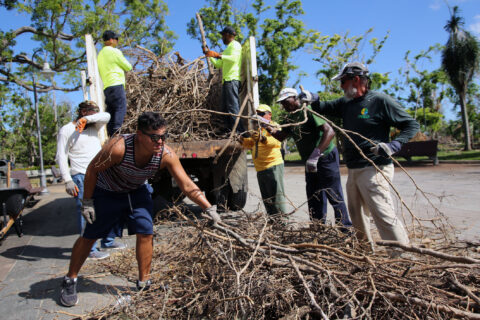Over the last two years, NLC and the National Governors Association (NGA) have led a collaborative initiative to support EV workforce development at the state and local level. Through this work, our partners at NGA identified four persistent electric vehicle (EV) workforce myths that are barriers to realizing the full economic, community, and environmental benefits of the EV sector.
Myth 1: EV Jobs Are Only Engineering or Highly Technical Roles
As EV technology, policy and adoption evolves, so does the demand for a range of skills and occupations. The industry offers a variety of roles spanning electrical work, assembly, automotive maintenance and advanced manufacturing. Many of these roles are learned on the job or through work-based learning programs like apprenticeship. Take, for example, the growth in charging infrastructure. Charging expansion not only means new opportunities for those installing, repairing and maintaining the electric vehicle supply equipment, but also the designers, planners, manufacturers, analysts and technologists behind the infrastructure, not to mention the many local transportation, public works and safety officials and policymakers that play a critical role in deployment.
Myth 2: You Need a College Degree to Enter the EV Industry
There are many pathways to a career in the electric vehicle industry, but many don’t require a college degree. Learners and workers have a variety of apprenticeships, work-based learning and training programs, and community college pathways to choose from. Skills-based training and certifications provide learners and workers with efficient and cost-effective pathways for entry and advancement in these growing careers. As the industry grows, it is increasingly important to ensure communities can benefit from the economic and environmental benefits of EVs.
Myth 3: The Electric Vehicle Workforce Isn’t Diverse
While the clean energy economy is more diverse than traditional energy, there is still work to be done and many exemplars modeling the way. Programs like Rosie’s Girls in Philadelphia or ChargerHelp’s SmarterHelp take equity-centered approaches to building career awareness and workforce training and job placement.
Myth 4: EV Training Needs Don’t Translate Across Industries
Many of the skills required to sustain the EV sector are not only valuable, but highly transferable across traditional auto manufacturing and energy sectors to name a few. Learning skills for an EV job doesn’t confine someone to a singular career path: rather, it equips them with practical skills that will last a lifetime.
City Spotlight: Denver, CO
The City and County of Denver’s Office of Climate Action, Sustainability and Resiliency is addressing information gaps and myths through their green career maps. These maps support residents as job seekers, workforce professionals and case managers. Check out their Electric Mobility Technology & Infrastructure Career Map to see how they bring together industry information with streamlined workforce development resources.
Local leaders can help dispel myths and create opportunities through awareness building and connecting the dots between their community, education and employer partners. Between these partners, you have many tools available to inclusively develop and connect talent to the EV sector to ensure their local EV workforce reflects the diversity of the region it serves. Local leaders can also leverage their convening power to bring together training providers and community colleges to develop programs, curricula and supports that meet industry demand while also benefiting learners and workers in the short- and long-term.





